Best noise gate pedals 2025: clean up your signal with the best noise gate pedals for guitar
Unwanted noise in your chain? A noise gate pedal could be the solution
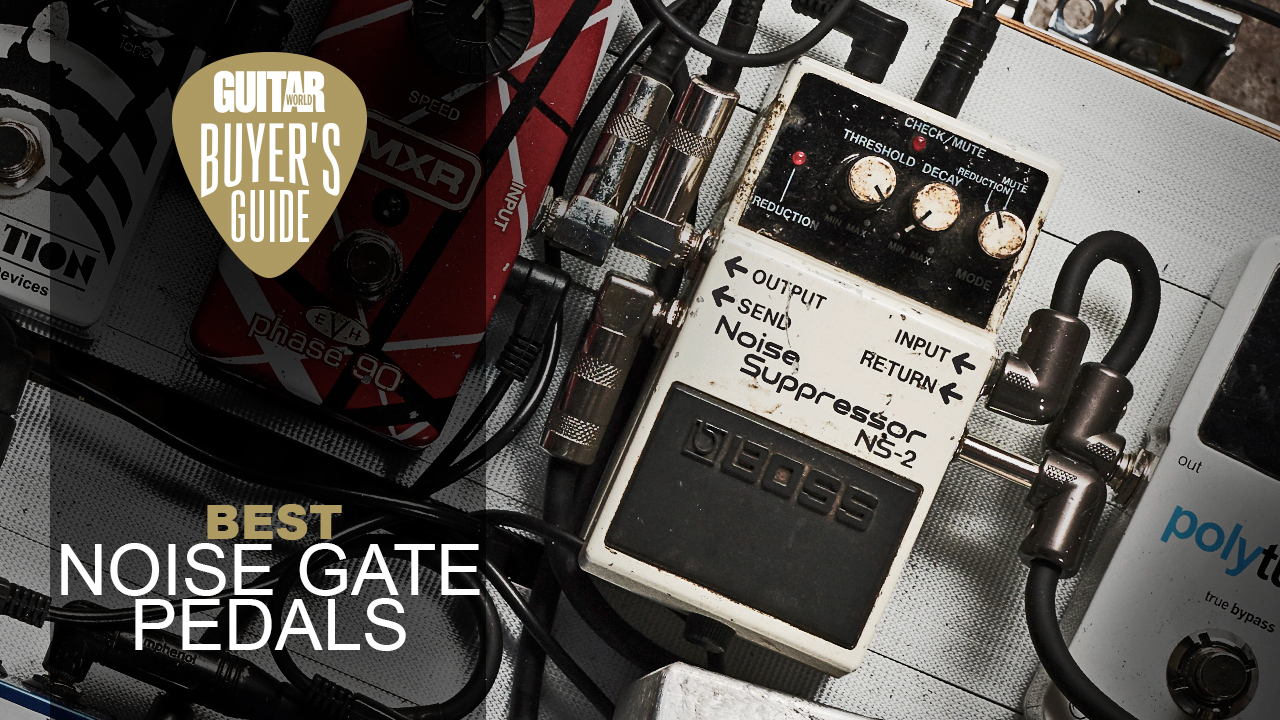
The noise gate is perhaps the most overlooked utility pedal there is. Guitar tuners are essential, and people recognize the need for one. Meanwhile, the coloration offered by a compressor can be very musical and help define a signature tone. The best noise gate pedals, on the other hand, are more like insurance – they're not cool, they're usually not that cheap, and if all is well, you won't even notice they're there.
Do enough club shows however, with bad wiring at the venue, a loud amp that's four feet from the nearest stage wedge, and a single-coil equipped electric guitar, and you'll realize that a noise gate is by no means a tool only for the pros. Even the cheapest of gates, stuck at the start of your chain and left on, can make a world of difference.
And if you're still not sure, maybe Zakk Wylde will convince you why a noise gate is such a useful tool. He used this very buyer's guide to stock up on a pair of noise gate pedals for the Pantera live shows to help him recreate those iconic Dimebag riffs. He told Guitar World that he “wouldn't be able to get through the Pantera show” without his noise gate.
Best noise gate pedals: Guitar World’s Choice
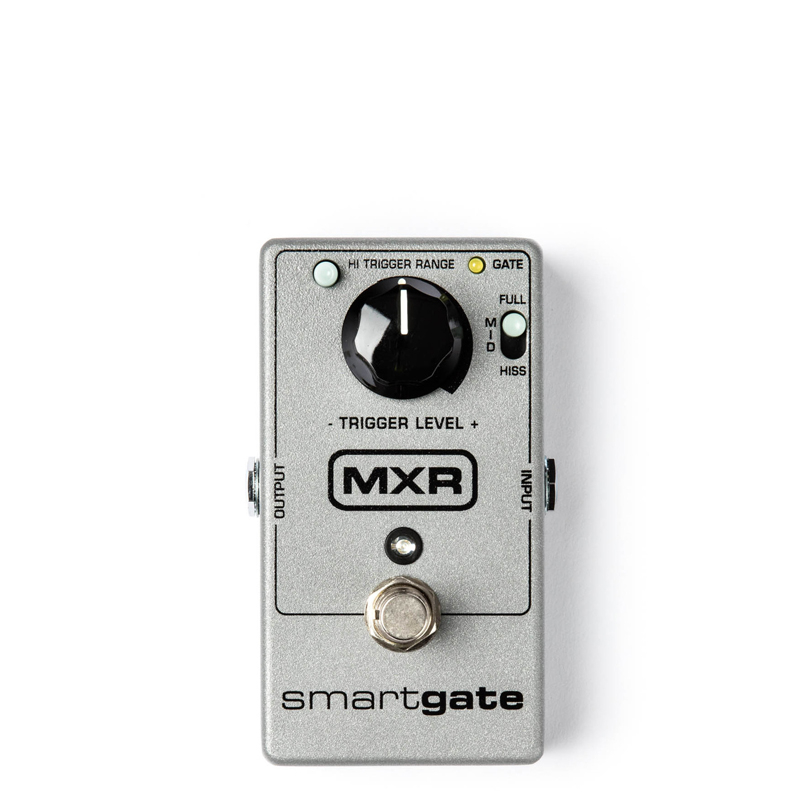
Looking at the front panel, you'd be forgiven for thinking that the MXR Smart Gate is one of the more simple pedals available. In fact, in part thanks to its three-mode operation, based on distinct bands of problem audio, it's very flexible for removing unwanted noise.
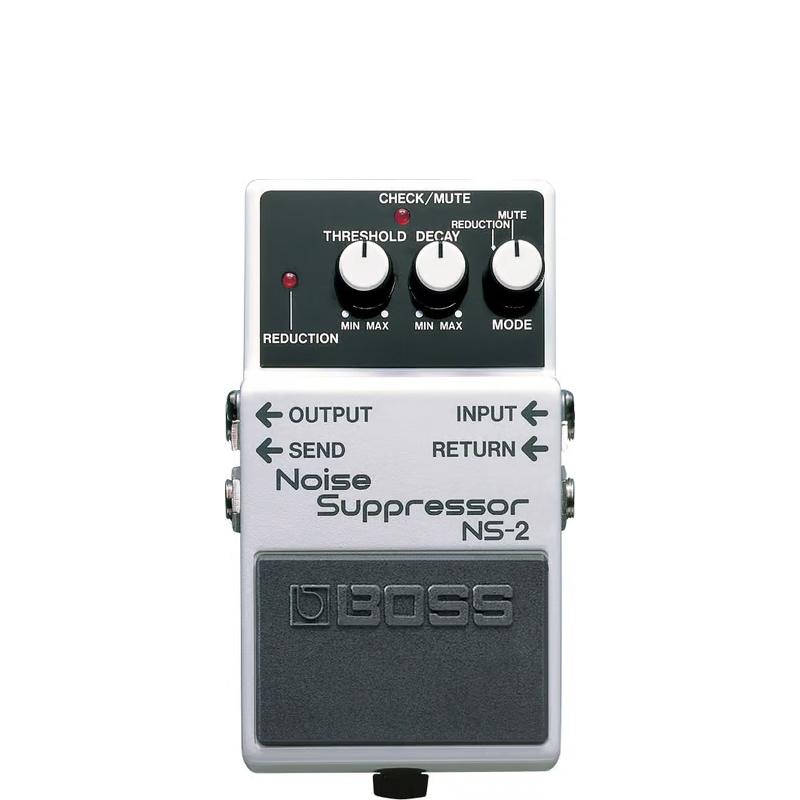
The Boss NS-2 may be showing its age compared to some of the higher-tech new options on the market, but the reason for its longevity is no more complicated than that it's good at what it does.
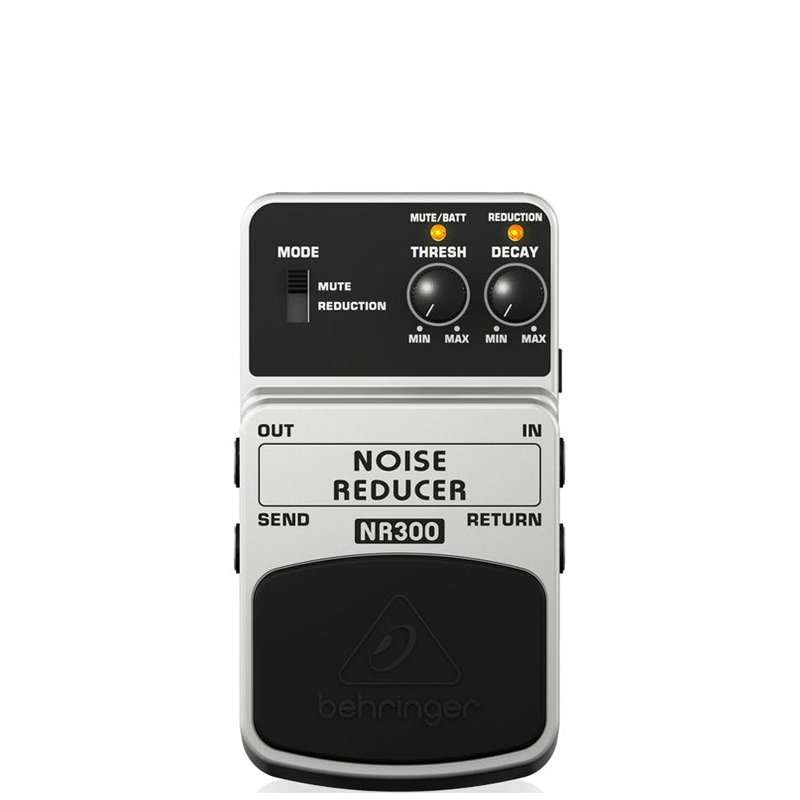
If the Behringer looks familiar, that's because it shares many similarities with the Boss NS-2. The catch, as is the case with all Behringer compact pedals, is that it's got a plastic enclosure, although in our experience it has to be said these are relatively robust.
Best overall
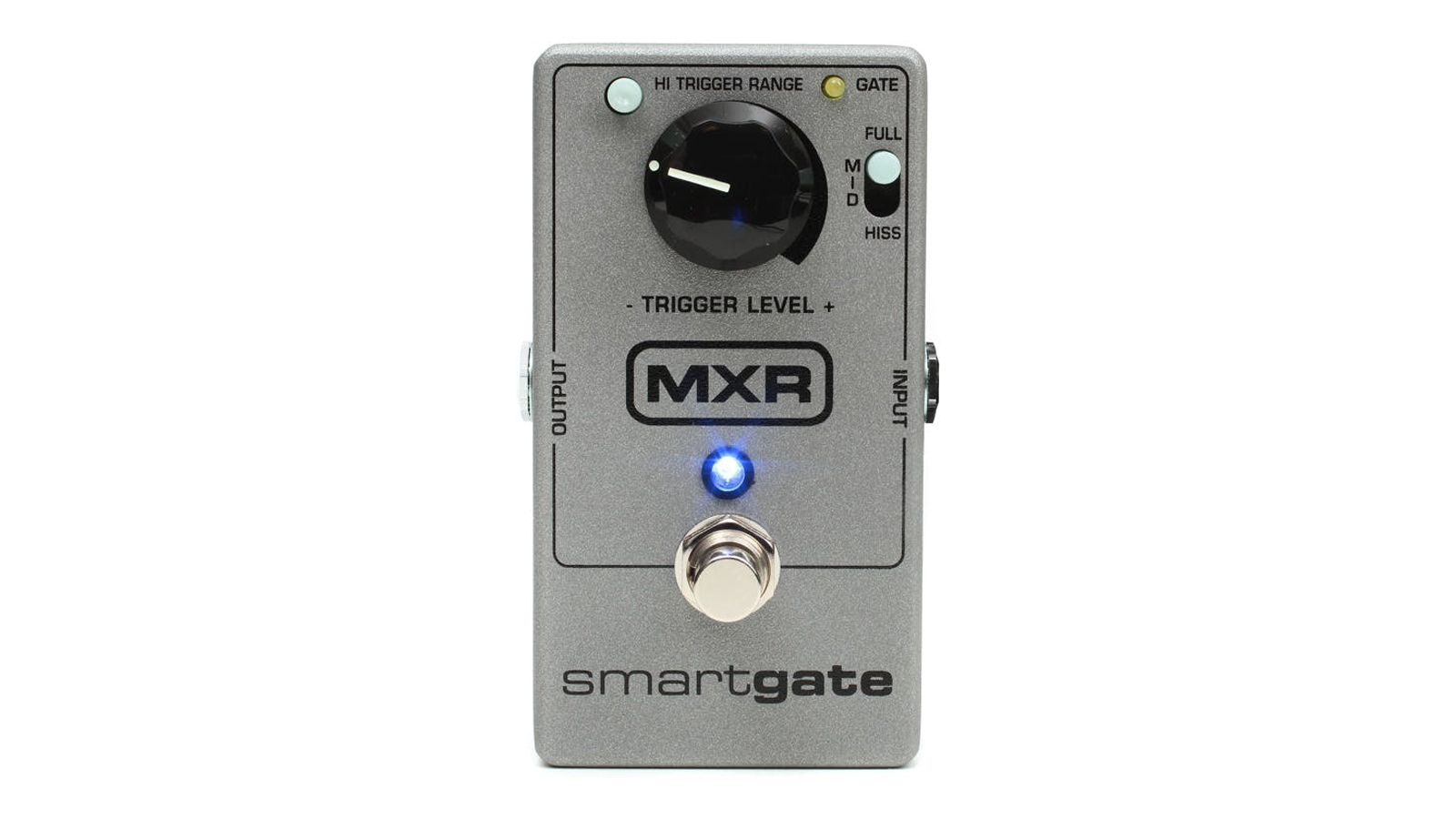
1. MXR Smart Gate
Our expert review:
Specifications
Reasons to buy
Reasons to avoid
Looking at the front panel, you'd be forgiven for thinking that the MXR Smart Gate is one of the more simple pedals available. In fact, in part thanks to its three-mode operation, based on distinct bands of problem audio, it's very flexible for removing unwanted noise.
The first mode is treble, the second is mids, and the third is a full-range gate mode, with the main Trigger knob being equivalent to a threshold control.
Best buffered
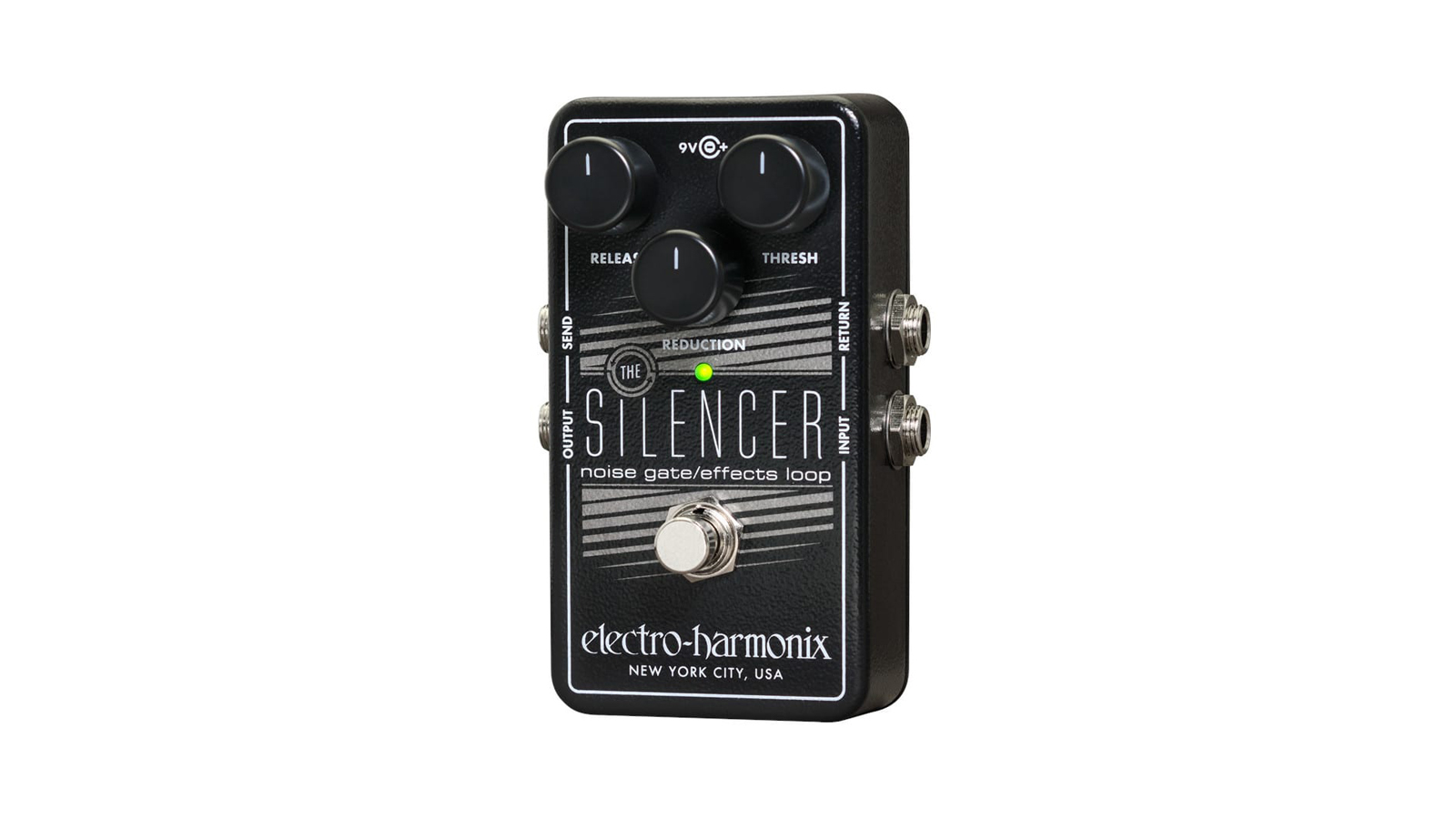
2. Electro-Harmonix Silencer
Our expert review:
Specifications
Reasons to buy
Reasons to avoid
The Silencer is pretty unique in that it has a dedicated Reduction control. That said, there's probably a reason that most guitar-focussed gates don't bother with one. 99% of the time you want complete attenuation, not attenuation down to a level.
In any case, the Silencer is an effective noise gate at the start of your chain. Crucially, it also has a send/return loop, meaning that you can either isolate the drive section of your board or use it in the effects loop of an amp.
Best for reliability
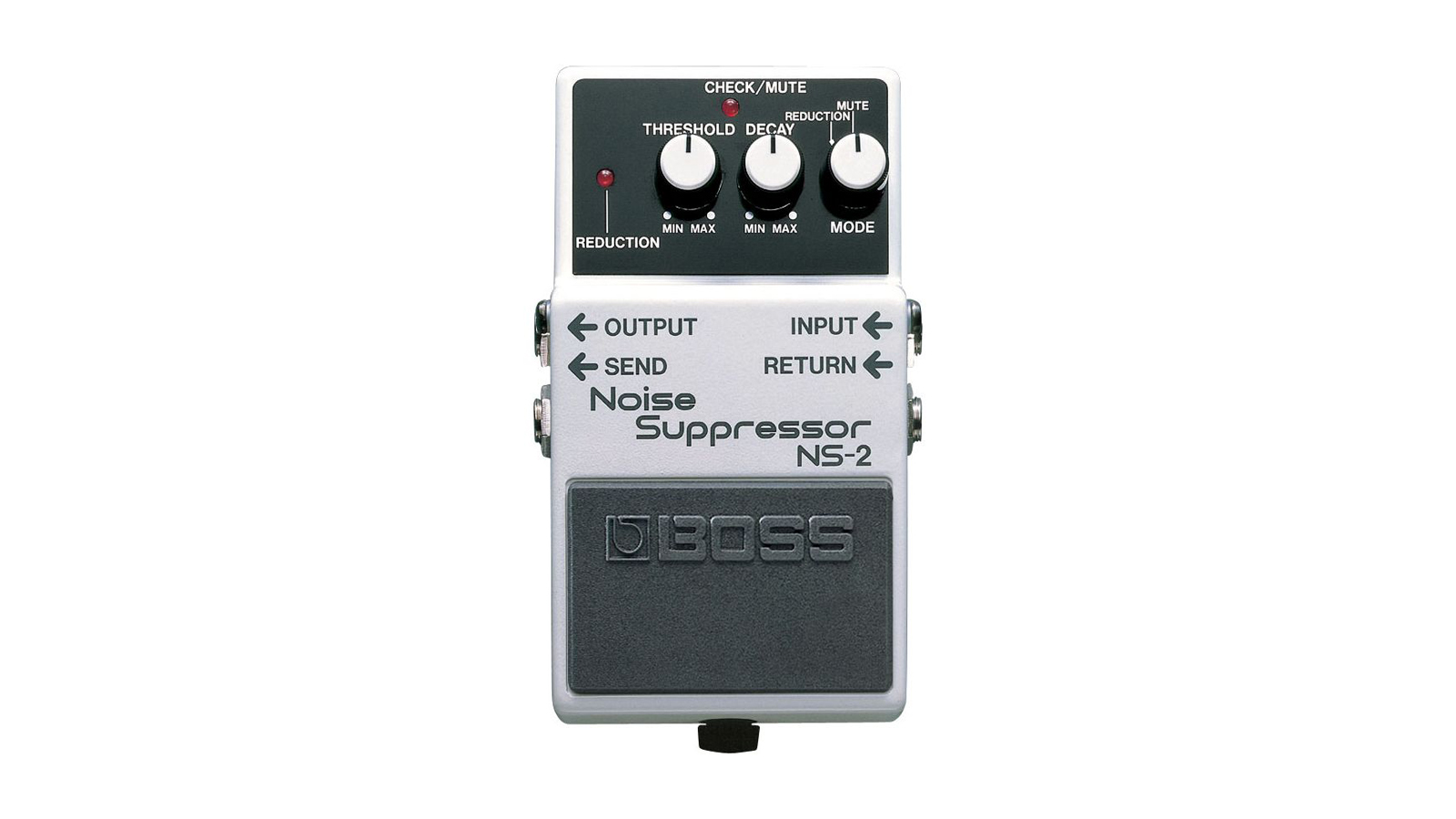
3. Boss NS-2 noise suppressor
Our expert review:
Specifications
Reasons to buy
Reasons to avoid
The Boss NS-2 may be showing its age compared to some of the higher-tech new options on the market, but the reason for its longevity is no more complicated than that it's good at what it does. Whether at the start of a chain to debug pickup hum, or using its send/return loop to isolate drives and an amp preamp, it's a versatile and effective noise-reduction unit.
It has two modes - in the first, it's only active when the footswitch has been pressed, while the second mode assumes the pedal will be used as an 'always on' pedal. In this mode, noise suppression is always on, and pressing the footswitch will simply mute the input - useful for a gig.
Best on a budget
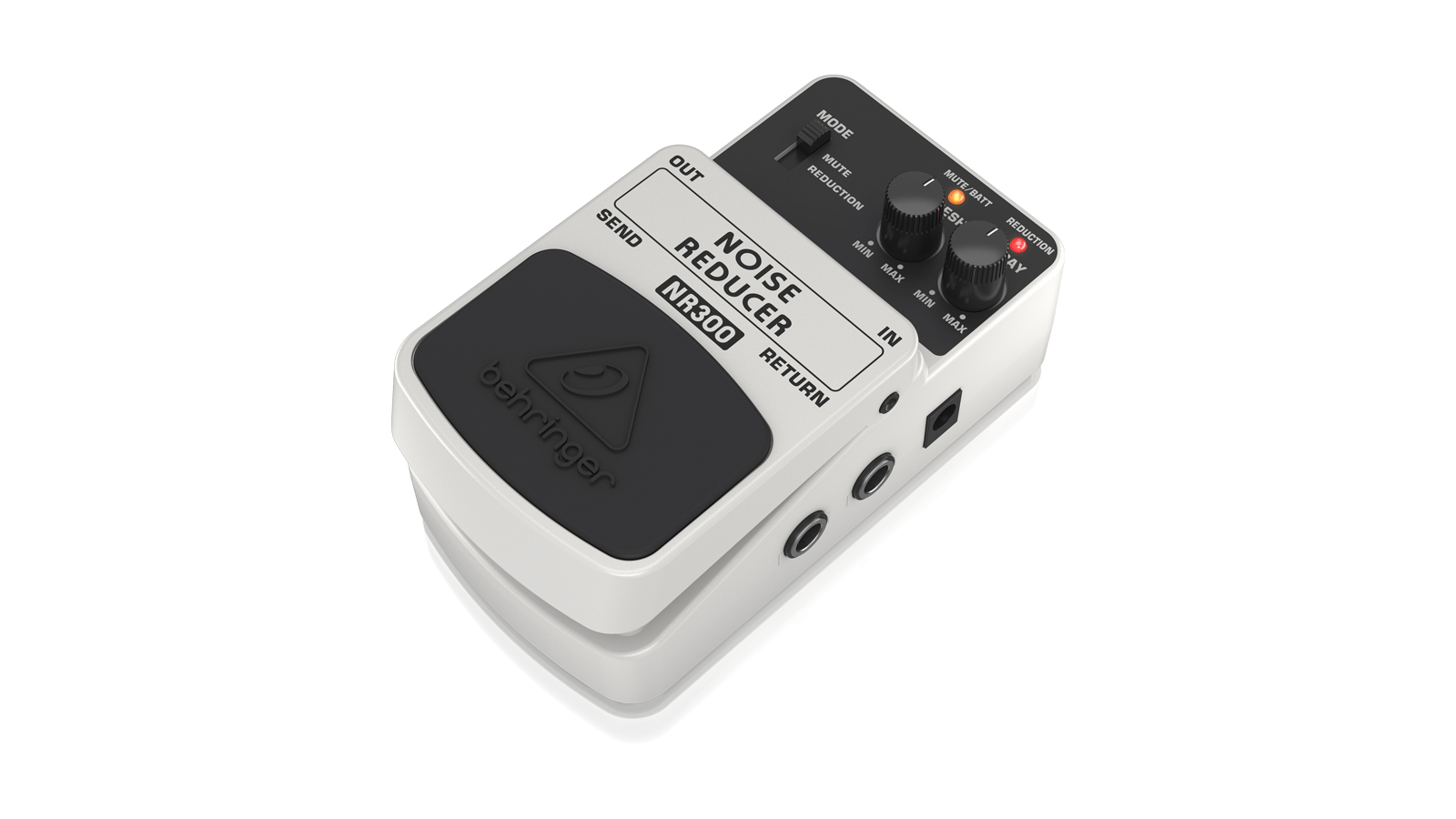
4. Behringer NR300
Our expert review:
Specifications
Reasons to buy
Reasons to avoid
If the Behringer looks familiar, that's because it shares many similarities with the Boss NS-2. The catch, as is the case with all Behringer compact pedals, is that it's got a plastic enclosure, although in our experience it has to be said these are relatively robust.
Obviously they won't take the abuse a metal enclosure would, but it's worth remembering that anything capable of breaking the Behringer but not the Boss would snap the knobs off either.
Sound-wise, it's just as effective, and also sports a send/return loop, making it by far the cheapest noise suppression or gate pedal to do so
Best for metal
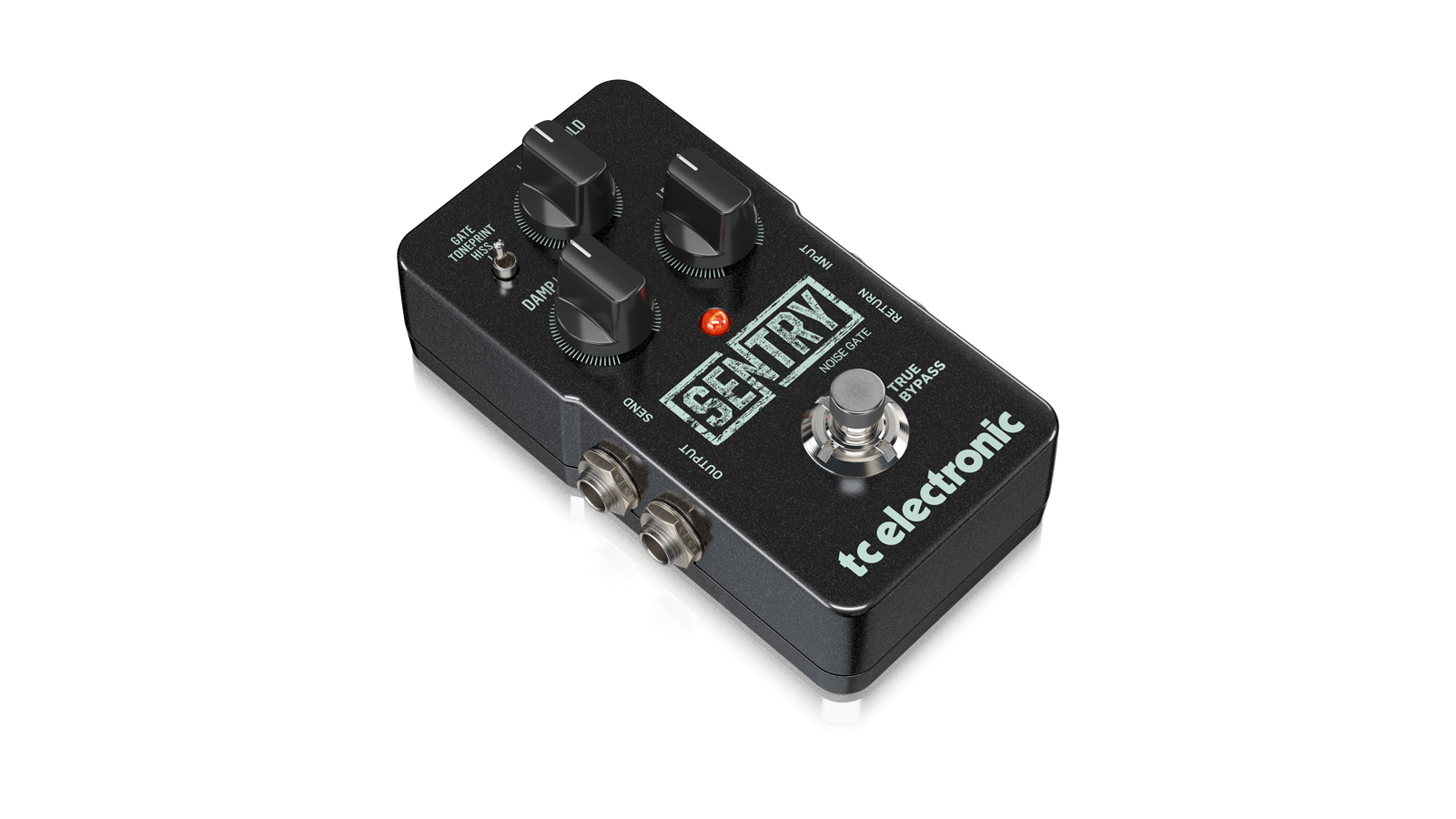
5. TC Electronic Sentry
Our expert review:
Specifications
Reasons to buy
Reasons to avoid
The Sentry is something of a goldilocks. It's somewhere between the budget and expensive options in terms of price, yet it's on paper one of the more advanced gates available. The only catch is that many of its most advanced features are only accessible in software, and frankly, most players will never use them as a result.
However, even out of the box it's got three modes, plus the controls you actually need - threshold and decay. Damp is signal attenuation, so most players are likely to want that maxed out.
The key difference for the Sentry is its three-band gate, meaning that each audio band gates independently. This means that unavoidable problem frequencies in a rig are no longer complete showstoppers, especially if they're unplanned for - like hum from lights or a venue's wiring. However, this mode is most effective when using the send/return loop in conjunction with fine-grained editing of the frequencies and thresholds of the three bands using TC's TonePrint software.
Best pro option
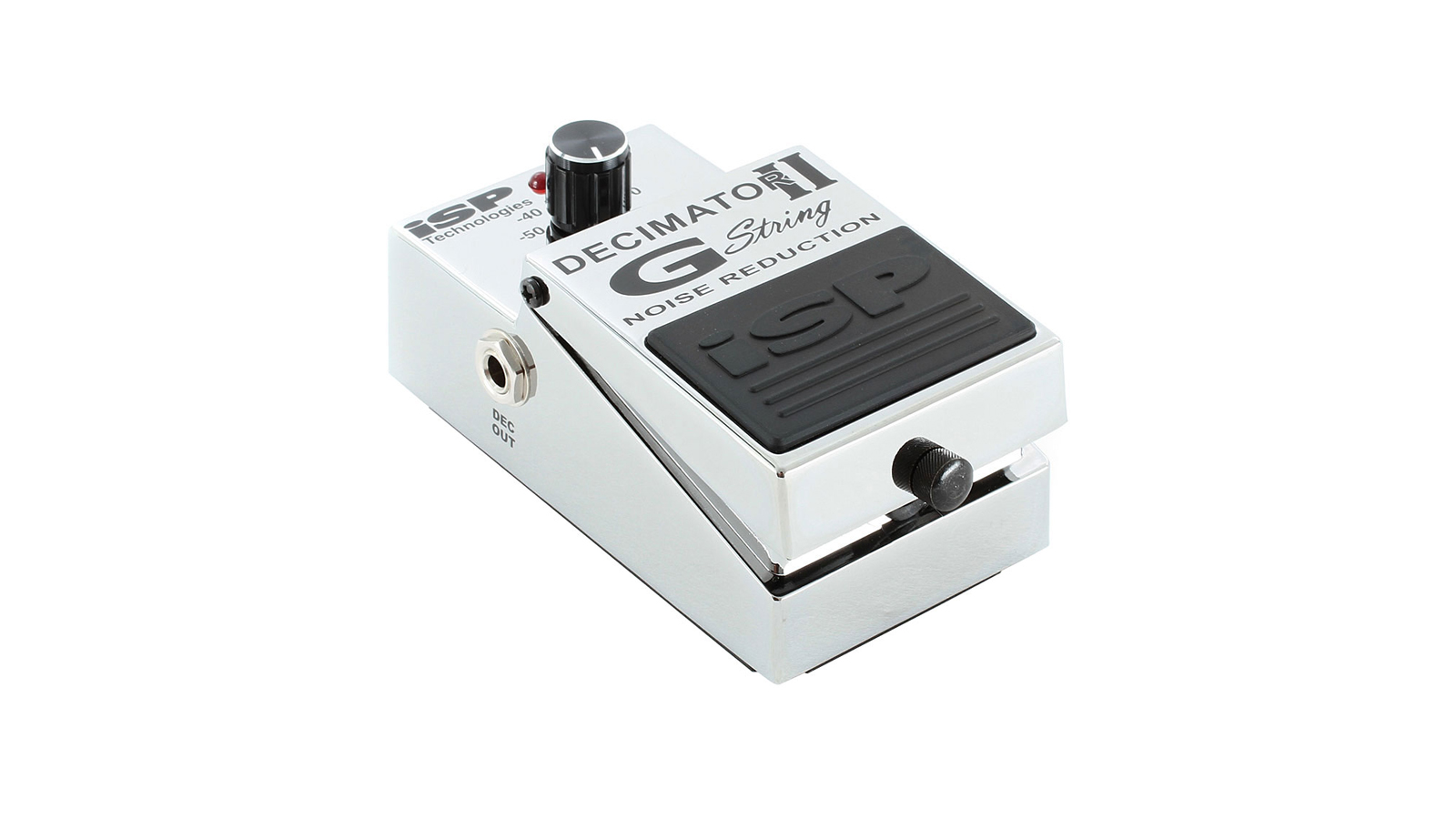
6. ISP Decimator II
Our expert review:
Specifications
Reasons to buy
Reasons to avoid
The stop-start staccato riffage of tech metal and djent is the perfect material to haze noise gates, and work out which can cut it. Overwhelmingly the pedal you'll see on those boards is the ISP Decimator, and that's for the reason that it just works. It's only got a single knob, relying on signal analysis to control its other parameters.
The pedal has hidden depths though - it can be chained with a second unit for stereo operation or so it can be run in front of an amp and in its effects loop. ISP says this dual unit approach yields better results than the four-cable method, but the cynical might observe that it also involves needing two pedals rather than one.
Should you want a send/return to isolate a couple of problem pedals, or use the four-cable method, then ISP do make a version of the Decimator - the G String - that offers this, but it's a bit more expensive.
Best compact

7. Pigtronix Gatekeeper Micro
Our expert review:
Specifications
Reasons to buy
Reasons to avoid
Don't let its size fool you - the Gatekeeper Micro is just as effective as any other simple gate, although it is expensive given how simple it is.
However, if you're short on pedalboard space and just want a 'set and forget' noise gate to get rid of the worst of your noise problems, then the Gatekeeper Micro could well be what you need.
Best noise gate pedals: Buying advice

You can trust Guitar World
How does a noise gate work?
Generally speaking, noise gates have many of the same controls as a compressor, although their function is a little different.
On studio-grade, rack-mount noise gates, you would expect all of the parameters to be present. In a compact noise gate pedal however, some of these parameters might be pre-set or, in a digital pedal, only accessible via companion software. As a result, access to these parameters is probably the most important choice you need to make.
The Threshold control sets the level at which the gate will 'open' and let signal through. The Attack control controls the length of time it takes the gate to move from closed to fully-open. You might consider this like a fade in control.
Release does the inverse - it's the length of time taken to go from open to closed. A fast release will result in the sound stopping dead, while a slower release is a more gradual attenuation.
Hold determines how long the gate stays open after the signal falls below the threshold. This control is more commonly seen on studio or broadcast kit, where for example, triggering a gate on short pauses in speech may not be desirable.
The simplest control is range - it's the amount that the signal will be reduced or attenuated when the gate is closed. For the purposes of guitar, this is often hard-set to complete attenuation, so no signal will pass.
Almost every pedal will have access to at least threshold and decay, sometimes called release. Some pedals streamline all the way down to a single knob, while most omit range/attenuation, setting it to be complete, such that no signal passes when the gate is closed. Almost no pedals have a hold control or a separation between open and close thresholds, although these controls are very common on studio and broadcast gates.
The other main question is whether the pedal has a send-return loop. For pickup-created hum, most issues can be dealt with close to source, by placing a noise gate at the start of a pedal chain, before gain pedals. However, many noise gates also have a send/return loop, so that instead of going first in a chain, your drive section, or any noisy pedals can be placed in the loop.
Additionally, a send/return loop allows you to use the four-cable method to use the pedal as a sidechain gate. To do this, you put drive pedals and the guitar preamp in the loop and run the effects send of the amp into the pedal return. As the gate will be triggered by the clean input of the guitar, any downstream noise, however loud, can never open the gate. Some players swear by the four-cable method to the extent of writing off any gate without a send/return.
More than many other types of pedal, a noise gate needs some testing in a chain to see where the best position is. There are three main options. At the beginning of the chain before drives, with them in a loop, or using the four-cable method, depending on the gain pedals and noise gate that you have.
How we choose products
Here at Guitar World, we are experts in our field, with many years of playing and product testing between us. We live and breathe everything guitar and bass related, and we draw on this knowledge and experience of using products in live, recording and rehearsal scenarios when selecting the products for our guides.
When choosing what we believe to be the best noise gate pedals available right now, we combine our hands-on experience, user reviews and testimonies and engage in lengthy discussions with our editorial colleagues to reach a consensus about the top products in any given category.
First and foremost, we are guitarists, and we want other players to find the right product for them. So we take into careful consideration everything from budget to feature set, ease of use and durability to come up with a list of what we can safely say are the best noise gate pedals on the market right now.
Read more about our rating system, how we choose the gear we feature, and exactly how we test each product.
Related buyer's guides
- Cheap guitar pedals: more top budget stompbox options
- Best looper pedals: become a more creative live guitar player
- Best boost pedals: including the best clean boost pedals for guitar
- Best multi-effects pedals: top do-it-all guitar effects units
- Best pedalboards: organize your pedal collection
- Best pedalboard power supplies for your ’board
All the latest guitar news, interviews, lessons, reviews, deals and more, direct to your inbox!
Alex Lynham is a gear obsessive who's been collecting and building modern and vintage equipment since he got his first Saturday job. Besides reviewing countless pedals for Total Guitar, he's written guides on how to build your first pedal, how to build a tube amp from a kit, and briefly went viral when he released a glitch delay pedal, the Atom Smasher.

